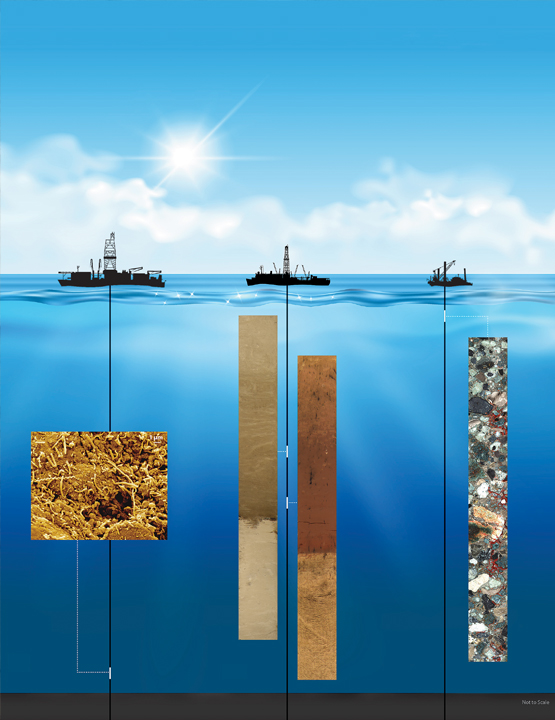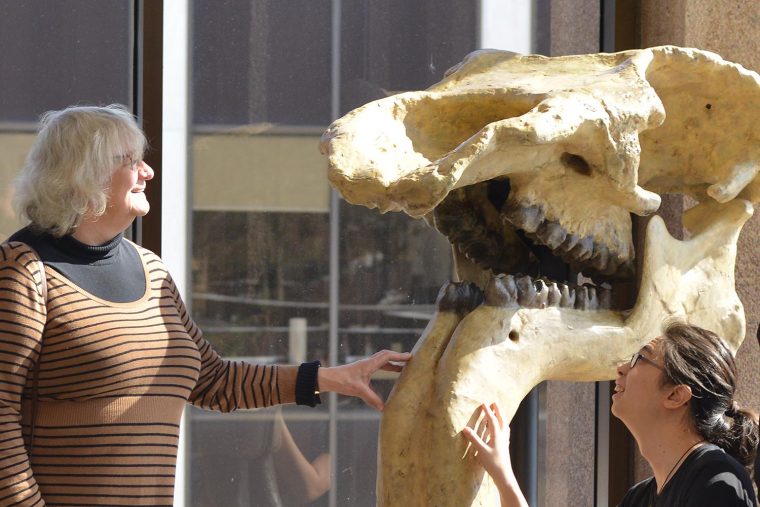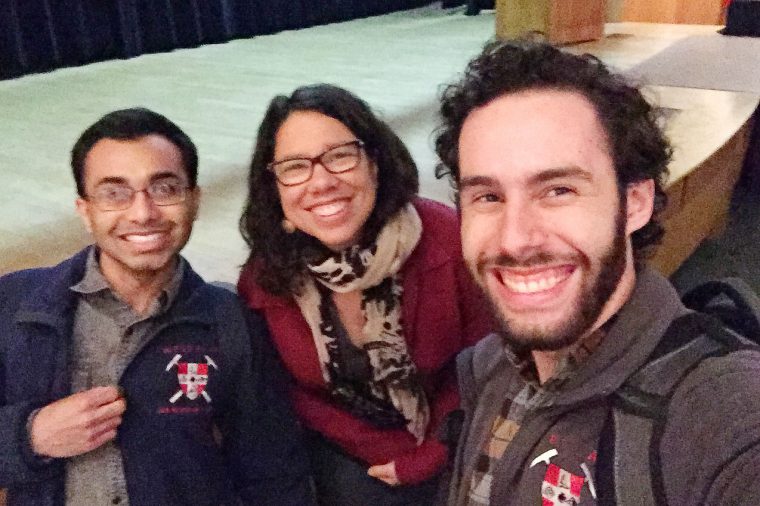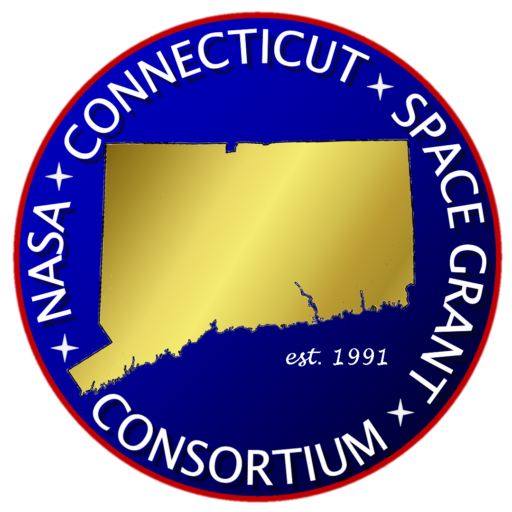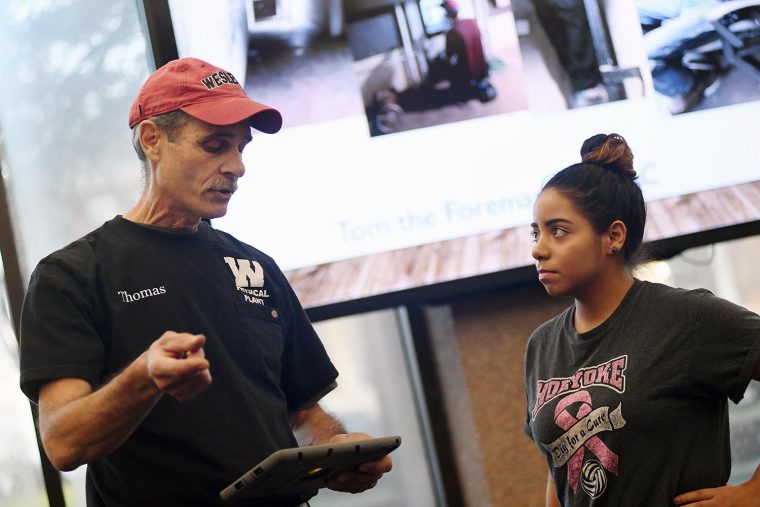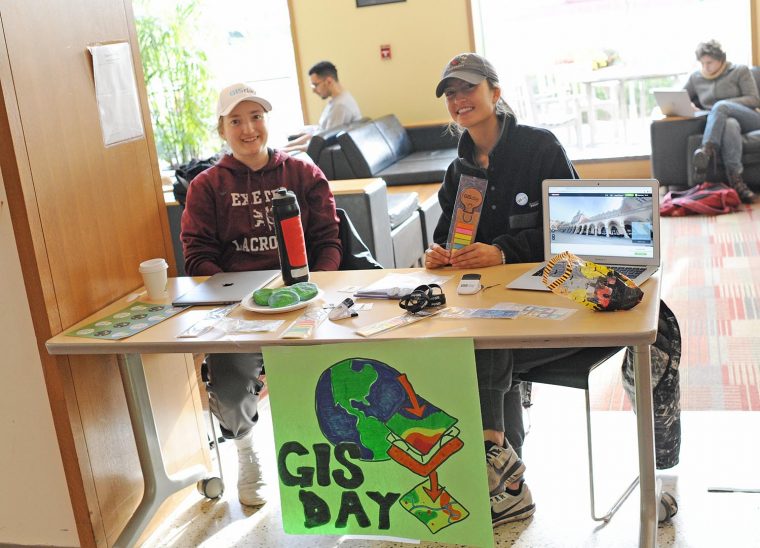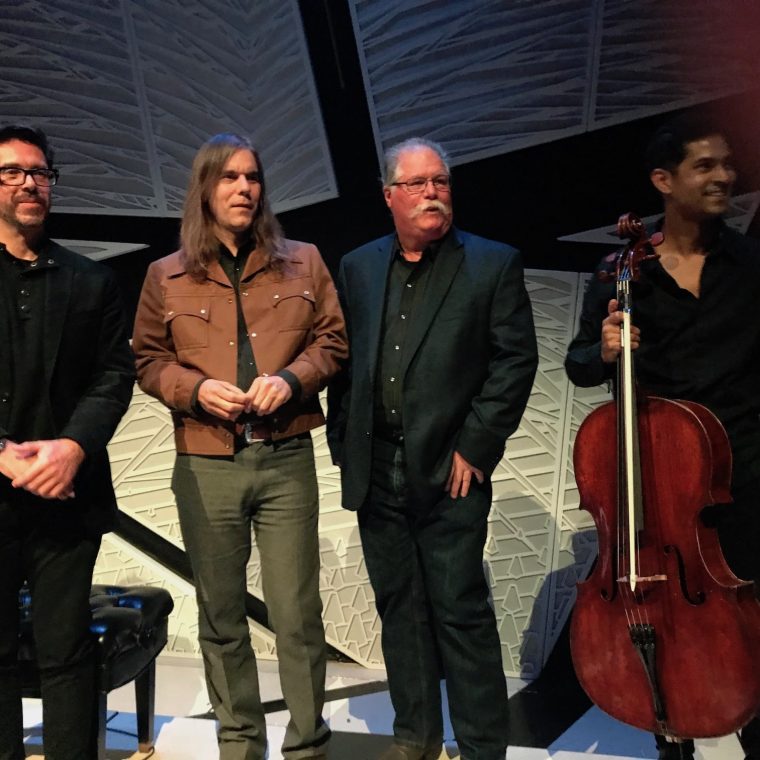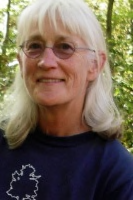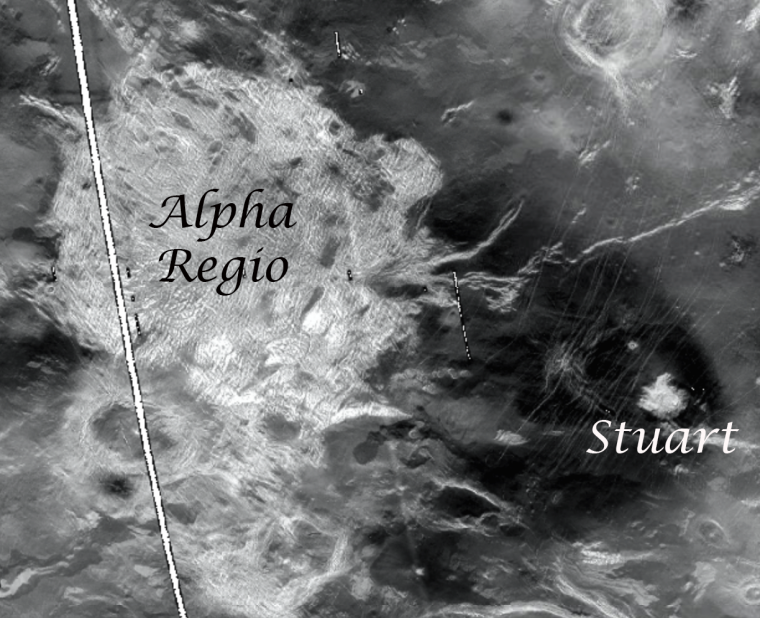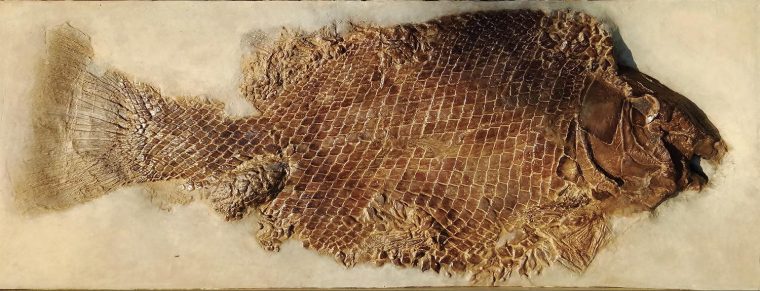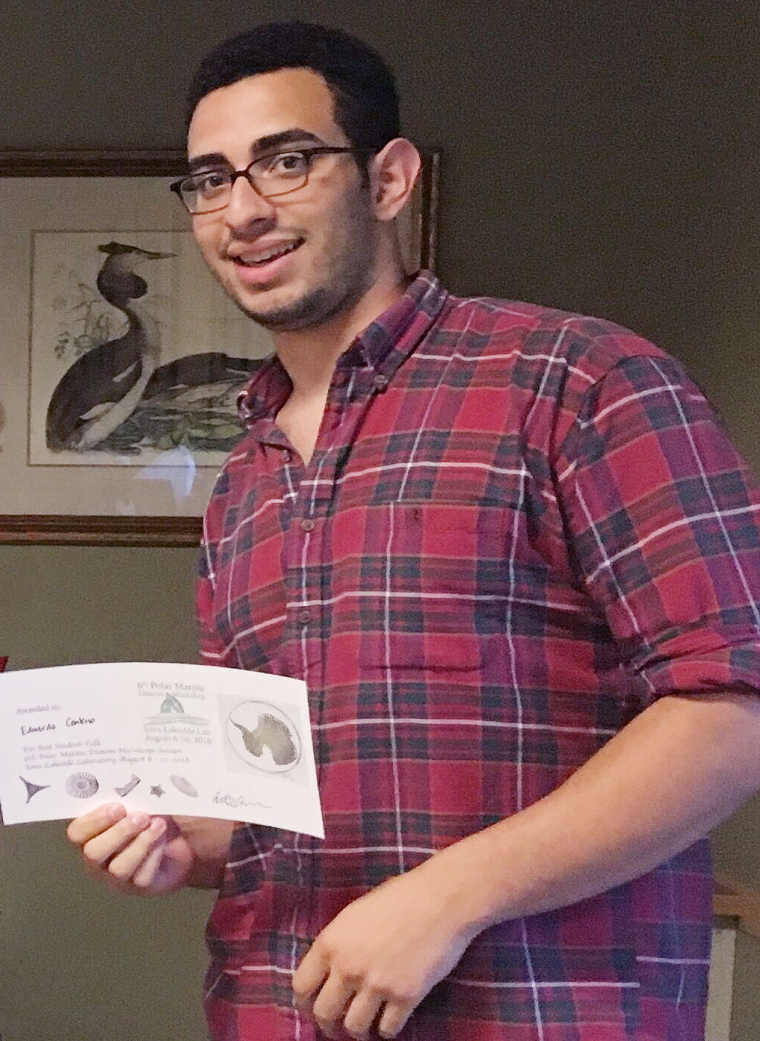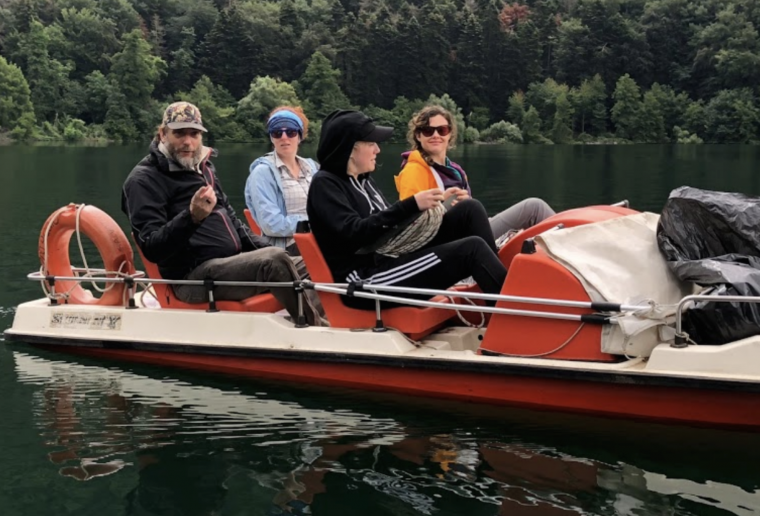Suzanne O'Connell, professor of earth and environmental sciences, is the author of a cover article titled "Holes in the Bottom of the Sea: History, Revolutions, and Future Opportunities," published by the Geological Society of America (GSA) Today in January 2019. Scientific ocean drilling (SOD) contributions include geophysical surveys, core samples, borehole well logs, and sub-seafloor observatories. After more than half a century, involving thousands of scientists from around the world, SOD has been instrumental in developing three geoscience revolutions: (1) plate tectonics, (2) paleoceanography, and (3) the deep marine biosphere. In this paper, O'Connell explains that without SOD, it is unlikely…
(more…)
Martha "Marty" Gilmore, the George I. Seney Professor of Geology and professor of earth and environmental sciences, presented a talk at the American Museum of Natural History on Feb. 4 titled "Venus: One Fate of a Habitable Planet." Gilmore's presentation was part of the museum's Frontiers Lecture Series, which highlights the latest advances in our knowledge of the universe by presenting the work of scientists at the cutting edge of astrophysics. Gilmore, a planetary geologist, uses surface mapping and orbital spectroscopy to study Venus's terrain. During her talk, she spoke about the planet's oldest rocks and what they can tell us about the…
Two graduate students and three undergraduate students are recipients of Fall 2018 NASA Connecticut Space Grant Consortium (CTSGC) awards. They are among 39 students from 13 CTSGC academic affiliate institutions to be honored. NASA CTSGC is a federally mandated grant, internship, and scholarship program that is funded as a part of NASA Education. There are Space Grant Consortia in all 50 states, plus Washington, D.C., and Puerto Rico. Earth and environmental science graduate student Christina Cauley received an $8,000 Graduate Research Fellowship for her project “Chemistry and Biology of Giant Hydrothermal Mounds in Paulina Lake, Oregon." Her advisor is Joop…
Six students in the Introduction to Environmental Studies course traded their notebooks, backpacks, and pens for wrenches, electronic temperature control meters, and even plungers as part of a special project involving staff from Wesleyan's Physical Plant. Throughout the fall semester, the students partnered up with an electrician, a plumber, material handlers, temperature control mechanics, and others to learn about trades and to form friendships with the staff who keep Wesleyan running behind the scenes. On Nov. 29 the students presented their experiences—through talks, performances, music, and graphics—to fellow classmates and Physical Plant staff. (more…)
On Nov. 14, Wesleyan celebrated geography, mapping, and spatial data analysis at the annual GIS Day. GIS Day provides an international forum for users of geographic information systems (GIS) technology to demonstrate real-world applications that are making a difference in our society. The first formal GIS Day took place in 1999. During GIS Day, the Wesleyan community was invited to participate in multiple activities, including a hands-on humanitarian map-a-thon, a seminar on digital storytelling with maps led by Sam Raby '17, and games involving "Fun with GIS." The events were led by students taking the E&ES 281: GIS Service Learning course…
Barry Chernoff, director of the College of the Environment, was one of eight scientists recently honored with a new musical composition based upon his research—part of a concert and album titled "The Sound of Science, performed in New York City on Nov. 10. The project aims to build "bridges between the musical and scientific worlds, celebrating their shared culture of inquiry," according to the website. The pieces were written by seven celebrated composers for amplified cello and electronics, and were all recorded and performed by world-renowned cellist Jeffrey Zeigler, longtime member of Kronos Quartet and several other groups. The Grammy…
Wesleyan faculty frequently publish articles based on their scholarship in The Conversation US, a nonprofit news organization with the tagline, “Academic rigor, journalistic flair. In a new article,Suzanne O'Connell, professor of earth and environmental sciences, writes about the important findings that have resulted from 50 years of scientific drilling on the ocean floor—and how much is still unknown. Scientists have been drilling into the ocean floor for 50 years – here’s what they’ve found so far It’s stunning but true that we know more about the surface of the moon than about the Earth’s ocean floor. Much of what we do…
Like planet Earth, the geology of Venus is diverse; consisting of areas of flat plains and deformed, mountain-like terrains called tesserae. And like Earth, Mars, and the Moon, Venus is checkered with hundreds of craters. “What's odd about Venus's craters, is that craters we do see are relatively young, indicating the surface of Venus has been covered by planet-wide volcanic flows," says Martha "Marty" Gilmore, George I. Seney Professor of Geology, professor of earth and environmental sciences. “The tesserae are the only terrains older than these volcanic flows and thus our only hope at accessing rocks from the first billion…
In 1870, Orange Judd bequeathed Wesleyan $100,000 to build Judd Hall, which was designed as a building for the study of natural sciences. Included with this building was the Wesleyan Museum, which housed a prominent natural history collection containing over 300,000 specimens. In 1957, the museum was closed and specimens were donated to other museums, put into storage in various places on campus, or "temporarily" loaned to local schools. In 1970, before the current museum reopened in Exley, the collection stored in the tunnels under Foss Hill was found to have been severely vandalized, with many specimens lost, stolen, or…
Wesleyan earth and environmental sciences major Eduardo Centeno ’19 was honored for presenting the "best undergraduate talk" at the 6th Polar Marine Diatom Workshop (PMDW), held Aug. 6–10 at Iowa State University. The honor also earned him a featured appearance on Iowa Public Radio. Centeno, a McNair Scholar, discussed his research titled "Environmental Interpretation of the mid-Pliocene at Site 697." For this study, Centeno examined the diatoms (fossils of algae) off of the coast of the Antarctic Peninsula using a marine sediment core drilled at a location known as Site 697. "Diatoms are really important microscopic plants that have been estimated to…
This summer, three Wesleyan students and one faculty member attended a field workshop in Basilicata, Italy, where they presented research, collected data, and visited an extinct volcano containing two bubbling crater lakes. The International Summer Meeting on Volcanic Lakes, hosted by the International Association of Volcanology and Chemistry of the Earth’s Interior, took place June 25–29 and focused on the theme “Different perspectives and approaches to studying a volcanic lake." Basilicata is home to the 3,350-foot-high Mount Vulture (pronounced "Vool-tor-eh"), which last erupted 40,000 years ago. The Wesleyan attendees included Department of Earth and Environmental Sciences (E&ES) graduate students Christina…


